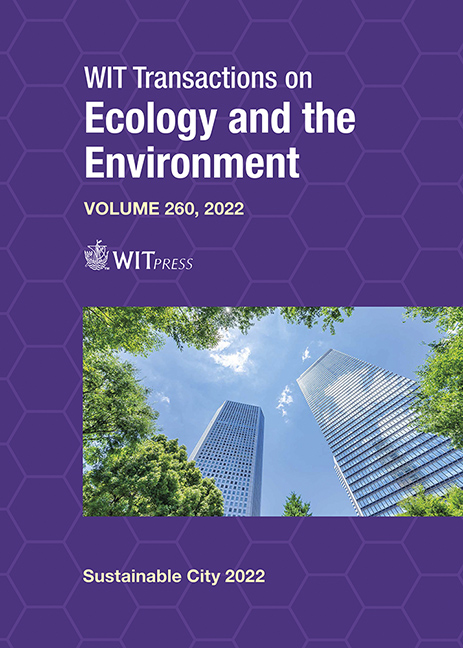DISPOSAL OF PYROLYSIS RESIDUE BY INCINERATION
Price
Free (open access)
Transaction
Volume
260
Pages
8
Page Range
273 - 280
Published
2022
Paper DOI
10.2495/SC220221
Copyright
Author(s)
MAREK JADLOVEC, JAKUB ČESPIVA, JAN VÝTISK, STANISLAV HONUS, TADEÁŠ OCHODEK
Abstract
In order to exploit all the energy potential that lies in the processing of waste material or biomass, there is a public pressure to recover as much of the material as possible before the landfill process takes place. One widespread method is the gasification process, which can generate a potentially energy-harvestable gas or liquid based on the set gasification conditions. The only waste material is the solid residue (char), which often contains large amounts of carbon (up to 84%), making it suitable for further use. One way of using char is to burn it in an experimental fluidisation unit, which is suitable for burning up to 3 kg·h of char and generating an equivalent gas (flue gas). The fully controllable fluidised bed combustion unit has a diameter of 140 mm and a height of up to 350 cm, and the fluidised bed consists of ST 54 glass sand with a mean grain size of 0.22 mm. This combustion process reduces the volume of the original material by up to 95%. The gas generated by the combustion process represents a potential for use in heat exchangers for heating feed water, in drying plants or cement plants. The quantitative and qualitative evaluation of the resulting thermal process products is described in this paper, as is the pyrolysis and combustion unit. The average low heating value (LHV) for pyrolysis char is 20.3 MJ kg−1, which represents a great potential in terms of its energy recovery. The reduction in volume of the original sample is 52.9–91.6%, where the heat output of the flue gas is 5.54–15.27 MJ kg−1.
Keywords
pyrolysis, char, incineration





